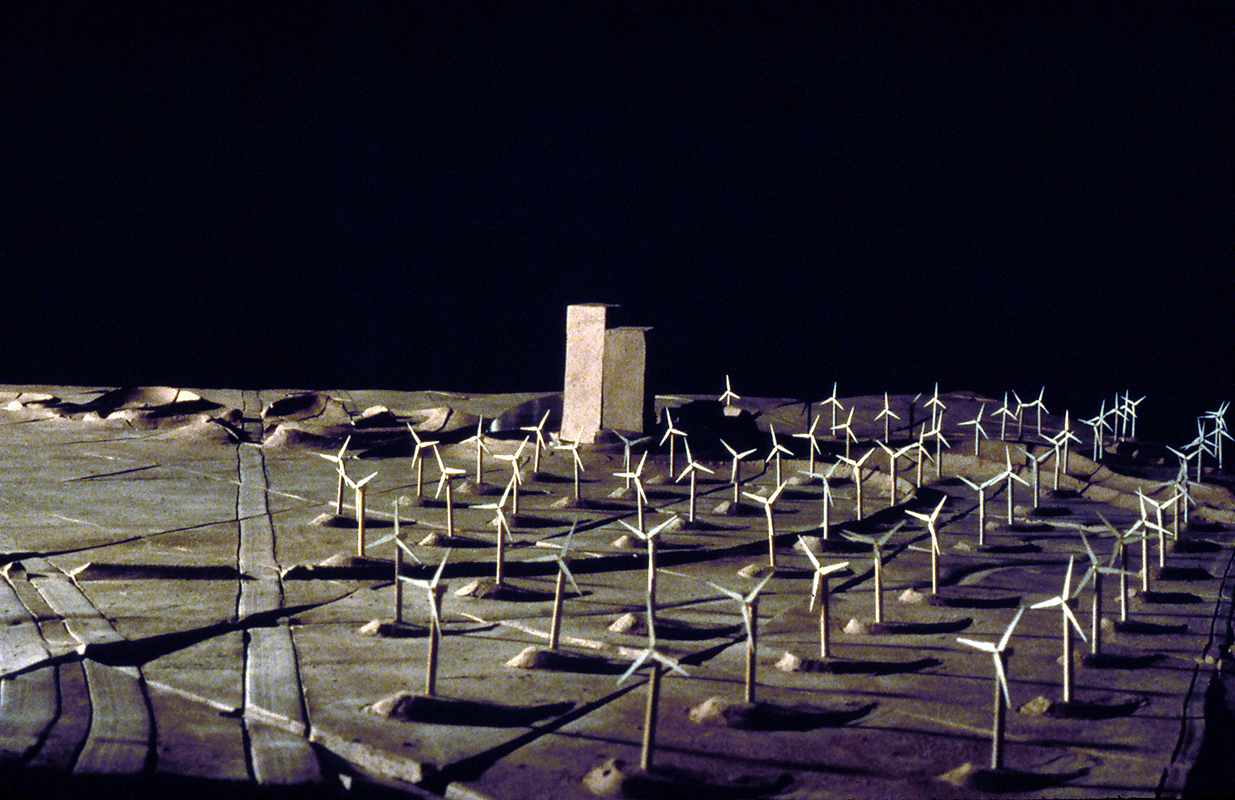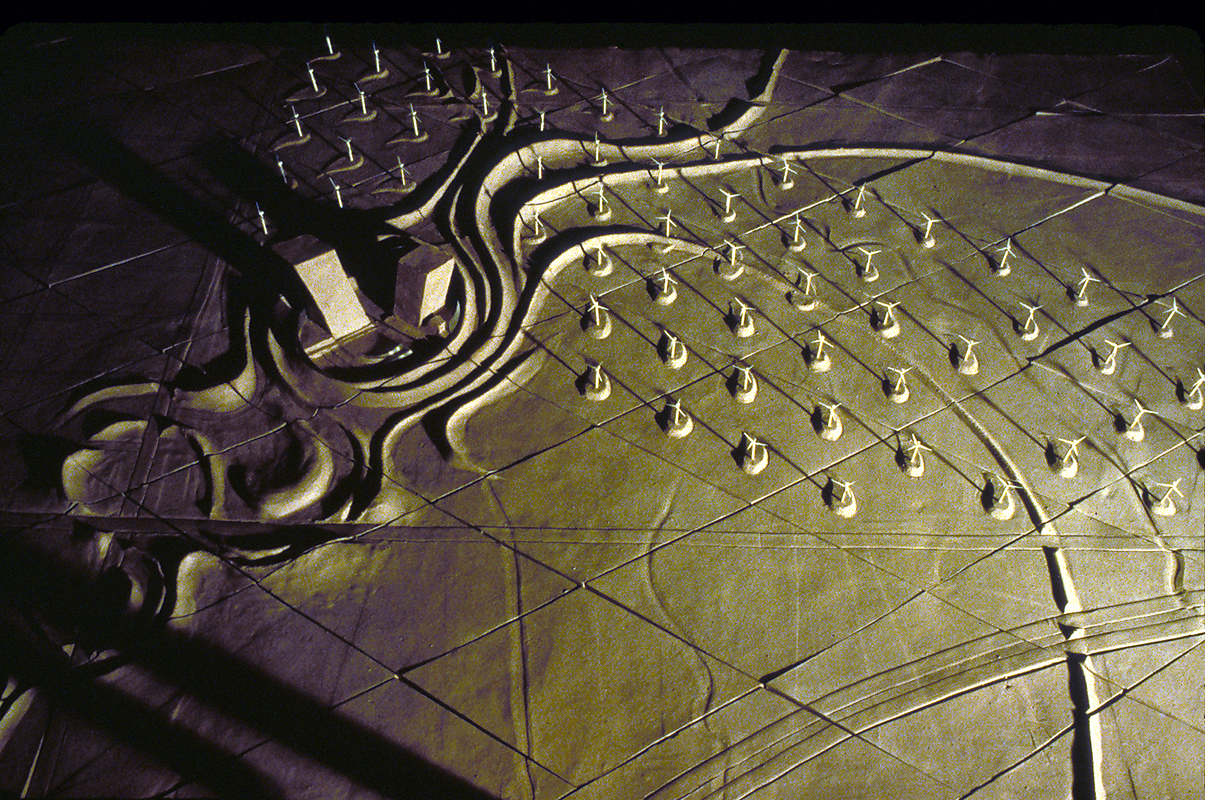A Center for Wind Studies
Somehwere near Enid, Oklahoma
Japan Design Foundation
International Design Competition, Osaka, 1992
Competition Theme: Wind, Air
Project Team:
David S. Tobin, AIA, Principal-in-Charge, Lead Designer
Roger Robison, AIA, Co-Principal/Designer
Competition Proposal Statement
The high plains of the central North American Continent are a vast windswept landscape. The wind in this region, in constant and sometimes violent motion, can provide vast amounts of clean energy to power civilization on our continent.
On the prairie, earth and wind are the dominating elements. Native people lived here for millennia; they were nomadic people in constant motion, following food and water with the seasons. The wind was feared and celebrated by these people as a central aspect of their culture. The native people lived and flourished in harmony with the earth and wind, until the winds of the Industrial Revolution swept over their culture and replaced it with one based on mass consumption and automated conversion of hydrocarbons into power and toxic waste. The winds of environmental destruction now threaten to sweep away our own culture.
We propose an institute on the prairie devoted to the harvest and celebration of Wind. Founded in a landscape where events of wind and sky dominate the land, the institute takes advantage of the native wind to financially support a program of scientific and cultural endeavors. It would be a destination for scientists, artists, scholars, engineers, and business people from all over the earth.
Yearly, during Spring, powerful storms on the prairie spawn Tornadoes. A swirling vortex of intense low barometric pressure takes form in a terrifying yet beautiful display of raw wind power. The Tornado is the symbol of the Center for Wind Studies. Near the city of Enid, Oklahoma, the Center lies in the heart of the Great Plains . The larger local map shows agriculture in green and superimposed fields of wind power generation in red. This rural area, dependent on agriculture and livestock, will take financial benefit from wind power generation. The Center and a field of wind power generators at the edge of the city, near what was once an oil refinery, is both part of the local urban and rural industrial context. The sculpted earth imitates wind. The landscape defines and shelters the Center’s complex of facilities. The field of wind power generators on cultivated land would be a common site on the Great Plains. Energy transmission by wire in the form of electricity or by pipeline and rail car in the form of Hydrogen will support commercial and domestic uses in other regions.
The form of the Center is a swirling vortex in physical and philosophical dimensions. The vortex evokes creation, destruction and synergy. The work of the institute, set in motion by feeding off of external cultural influence assumes it’s own form. Dynamic and beautiful, it projects it’s own influence outward again.

